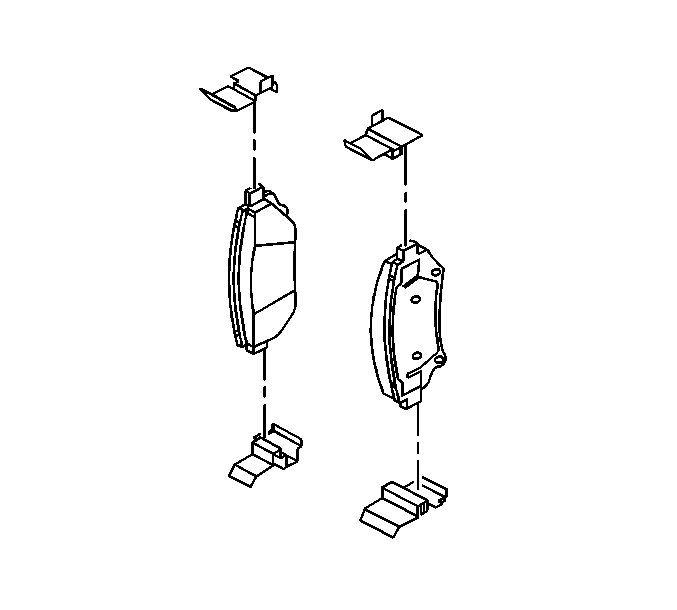Caution: Refer to Brake Dust Caution in the Preface section.

Notice: When using a large C-clamp to compress a caliper piston
into a caliper bore of a caliper equipped with an integral park brake mechanism,
do not exceed more than 1 mm (0.039 in) of piston travel. Exceeding this amount
of piston travel will cause damage to the internal adjusting mechanism and/or
the integral park brake mechanism.
- Compress the piston until resistance is felt, but no more than 1 mm of piston travel.
- Grasp the brake caliper and try to move the brake caliper up or down. The brake caliper should not have excessive looseness.
- Grasp the brake caliper and try to move the brake caliper in and out . The brake caliper should slide smoothly with minimal force.

- Inspect the brake caliper retainers.
- Inspect the disc brake pad mounting hardware for the following:
| • | Looseness at the brake caliper mounting bracket |
| • | Looseness at the disc brake pads |
| • | Missing mounting hardware |
- If any of the conditions listed are found, the disc brake pad mounting hardware requires replacement.
- Ensure the disc brake pads are held firmly in place on the brake caliper mounting bracket, yet slide easily on the mounting hardware without binding.
- Inspect the brake caliper bolts for the following:
| • | Bent or damaged brake caliper bolts |
| • | Bent or damaged brake caliper mounting bracket |
| • | Looseness in the brake caliper mounting bracket |
- If any of the conditions listed are found, the brake caliper mounting hardware requires replacement.


